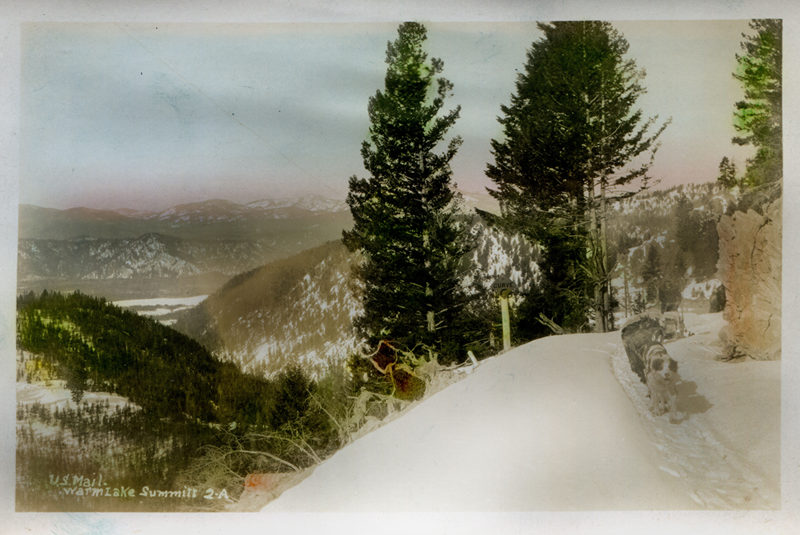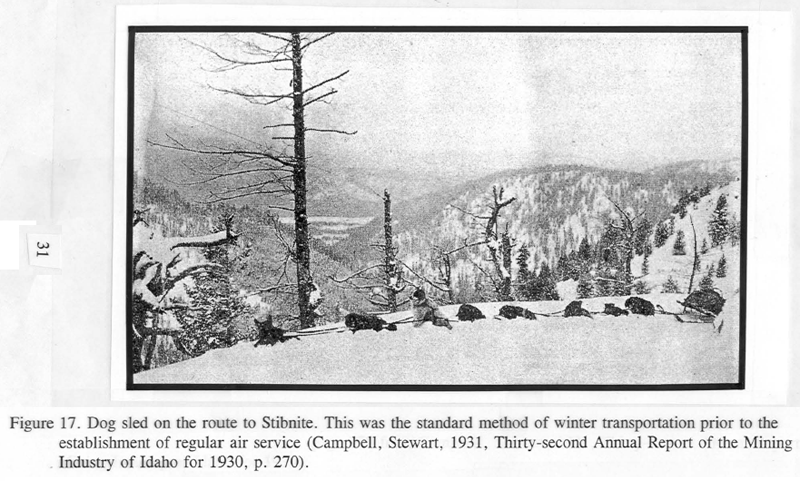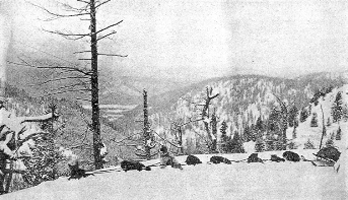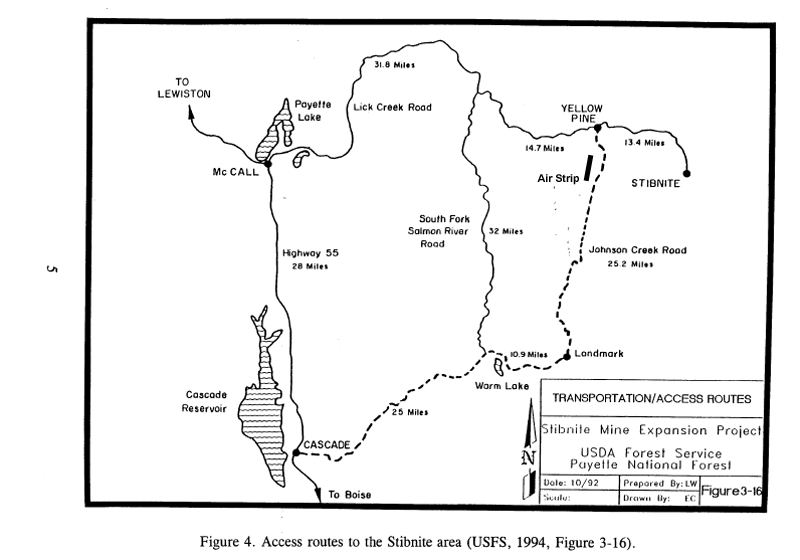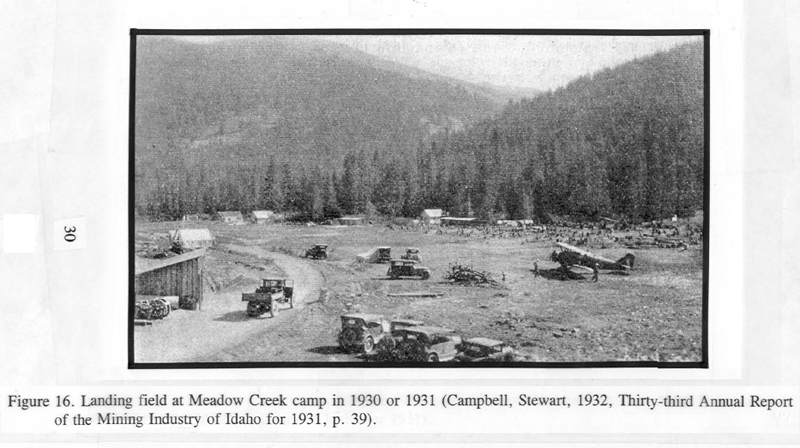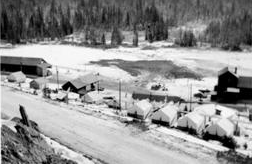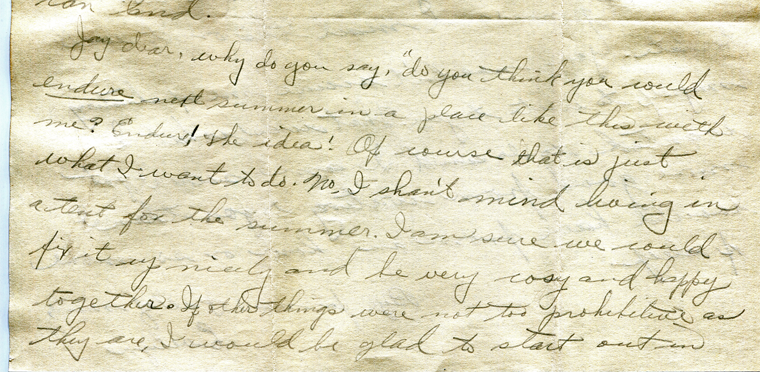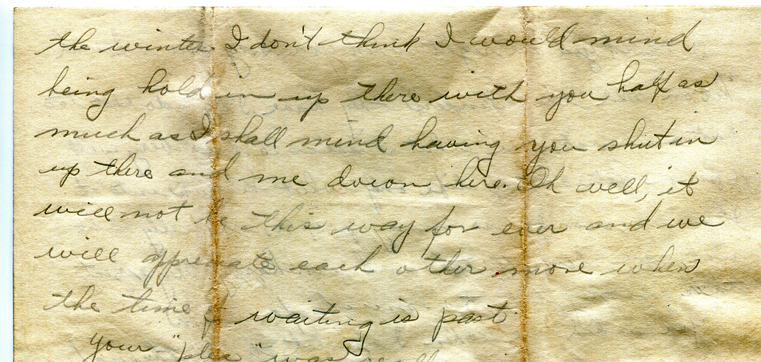Air service into and out of Stibnite in seven-passenger Curtiss Robin airplanes was begun in 1930.
Dad mentioned that getting into and out of Stibnite in seven-passenger Curtiss Robin airplanes
was pretty exciting especially on stormy days!
There is another reason these trips may have been quite exciting... He was courting my future
mother and they were getting close to tying the knot!
Tents were the most common living accommodations during those days.
This can be noted from this excerpt from
Where in Idaho is Stibnite? Mining Camp Memories of Patty Anderson Herbel who lived in Stibnite
in the '40s. She describes how the tents were constructed. These 12x16 foot tents were pretty
rudimentary but according to Patty, "Some had babies living in them during the winter when it
hit 42 below zero. No, no one died! It didn't take a very big stove to keep them warm." Photo of
tents at Stibnite provided by Patty Anderson Herbel from her personal collection.
Apparently Dad was a bit apprehensive about asking Mom to take up housekeeping in a rough
mining camp where, summer or winter, tents provided the main living quarters. These excerpts
from a letter Mom wrote to Dad during this time period indicate that she was willing even eager to
share a tent, even in the winter, had it not been for other unexplained circumstances.

Things appear to be working out as shown by this picture and the information on the back.
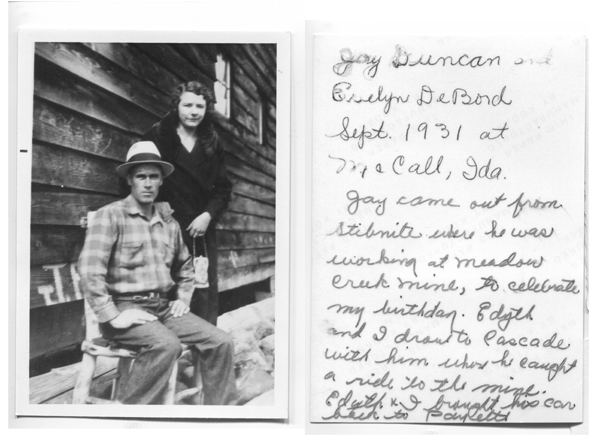
"Driller" at work
The only picture I have of my Dad actually working in a mine may have been taken at the Meadow Creek mine
at Stibnite but could have been taken when he worked in the mines around Kellogg, Idaho or later at
the Almaden Mercury Mine near Weiser, Idaho. The structure of the rock reminds me of the Mercury
Mine but there isn't enough shoring to convince me. Maybe someone familiar with what the rock in
the tunnels looked like at Stibnite or the mines around Kellogg will weigh in on this.
Update: Someone did weigh in on this picture. The publisher of the Yellow Pine Times, railroadSue,
sent me an email that relates to my picture -
"Howdy Don, I ran across your webpage about Stibnite. I posted a link in the Yellow Pine Times to your page.
Great photos! I also wanted to share a letter received today from one of the subscribers about the drill
your dad is using."
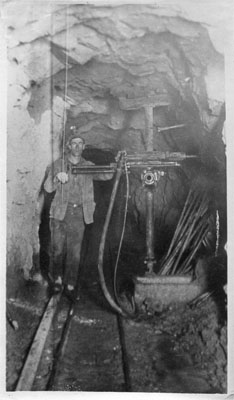
This is the letter she received:
"Regarding the miner in the Stibnite article:
The miner is using a hand crank water
leyner to drill with. His right hand is on the crank which pushes the drill steel in as the drill is
rotating. His left hand is on the machine throttle. The big hose is for air and the small hose is for water.
He is wearing a hard hat and carbide light.
He is drilling at a 90 degree angle to the tunnel so is making the area bigger for some reason.
The rock is quite hard, as you can see a lot of drill steel leaning against the wall.
No timber or support is needed so in miner's terminology, he is driving the drift "baldheaded".
This is a great picture. I have a drill exactly like the one he is using in my front yard.
It came from Stibnite. I would say it would be a good guess that this picture was taken in the
Stibnite area.
Best regards,
Ron Smith"
